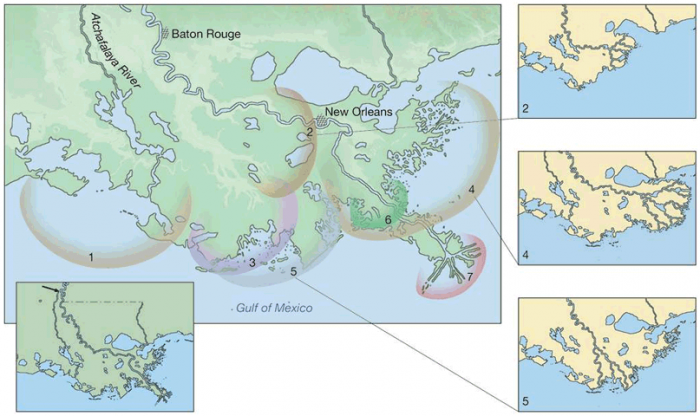Sea Level Change in the Holocene Epoch
In the figure on the previous page, we observe that approximately 6,000 years ago, the rate of sea level rise slowed significantly. This left significant ice sheets on Greenland, Iceland, and Antarctica. Why didn't the rate of ice-sheet decay continue? That's a very good question. This time frame happens to coincide with decreasing incoming solar radiation values from Milankovitch forcing models.
Although it isn't yet clear, this relationship is a hypothesis that is being tested. Did the slowdown in the rate of sea level rise to a near still stand correlate to decreasing insolation in the Northern Hemisphere? Despite a level of greenhouse gas concentrations of ~265 parts per million, the rate of rise could not be sustained because the vast ice sheets were already melted and decreased insolation values per unit area in the Northern Hemisphere may have contributed to the development of stability in sea levels. In other words, greenhouse effects may have acted to continue to keep sea levels rising despite decreased insolation. Thus, sea levels achieved a much more stable condition.
For the period from roughly 6,000 years ago to the last century, the amount of rise is estimated to have been just a few meters. Hence, rise rates fell almost to zero (~0.7 mm/year), a far cry from the 15 mm/year rise rates estimated for the immediately preceding interval.
Under these relatively stable conditions, many of the coastal features observed today developed and expanded. Coral reefs that were able to keep up with earlier rates of sea level rise began to expand laterally, building large reef systems including the Great Barrier Reef and others in the Pacific Ocean, and the barrier reef systems common off south Florida and in the Caribbean. Likewise, deltas were built from sediments deposited by large river systems around the globe, including the Mississippi River delta. Numerous barrier islands were formed along the eastern seaboard and the Gulf of Mexico. They migrated slowly landward, up the continental shelf as sea level rose.

